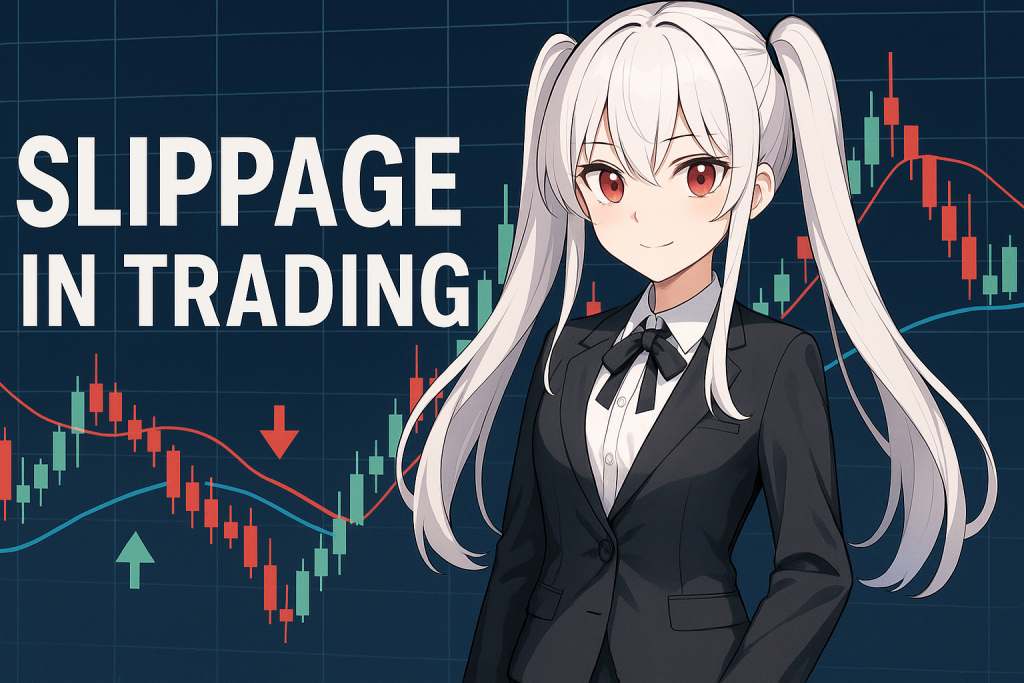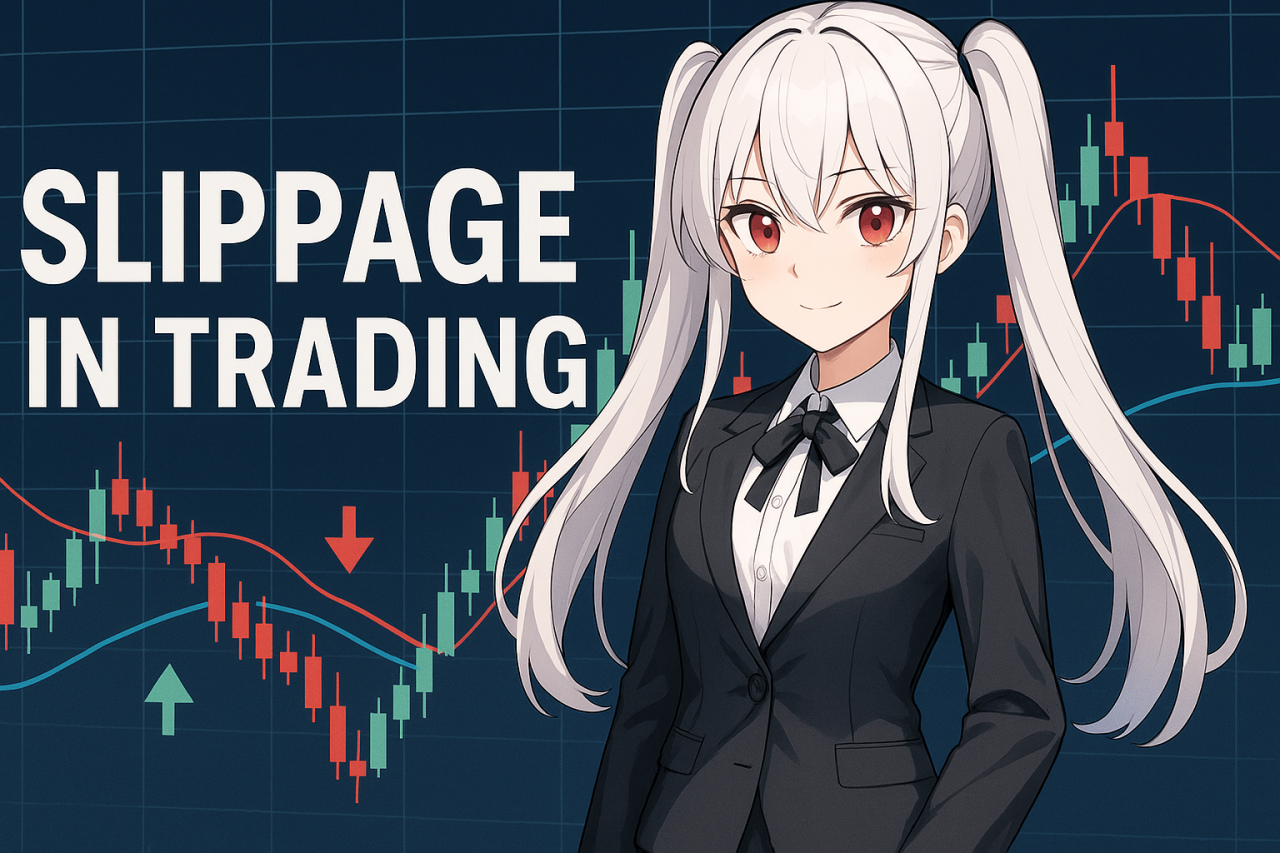What is Slippage? Its Impact on FX Trading
Definition and Mechanism of Slippage
Slippage refers to the difference that occurs between the price specified at the time of an order and the price at which the trade actually settles in FX trading. It arises from market conditions and timing, and is a phenomenon that all FX traders may encounter.
Slippage is more likely to occur during times when markets swing sharply or when key economic indicators are released—periods when orders tend to cluster. It also tends to happen during low‑liquidity hours, such as early mornings.
Understanding and appropriately managing slippage is crucial from a risk‑management perspective when engaging in FX trading. Since slippage can lead to unexpected losses, grasping its mechanism is essential.
Pros and Cons of Slippage for Trades
Slippage isn’t always a disadvantage. Depending on market movements, slippage can occur in a favorable direction, ultimately increasing profits. For example, if you place a buy order and the market rises, resulting in a settlement at a higher price, your profit increases.
Conversely, if slippage occurs unfavorably, there’s a risk of amplified losses. When you place a sell order and the market falls, leading to settlement at a lower price, your loss grows.
Thus, slippage can affect trade outcomes both positively and negatively. Therefore, understanding and properly managing slippage risk is vital. This is especially true for short‑term trades, which are more susceptible to slippage.
Difference Between Slippage and Requote
A phenomenon often confused with slippage is requote (rejection). While slippage means the order passes but settles at a price different from the one specified, requote means the order itself is rejected.
Requote occurs when there’s a significant discrepancy between the price quoted by the FX broker and the price at the moment the order is processed. For instance, if the market swings sharply or orders flood in. Additionally, if a slippage tolerance is set and slippage is deemed likely to exceed that tolerance, a requote may be triggered.
If a requote occurs, the trader must place the order again. Both slippage and requote can be risk factors in FX trading, so understanding their differences is important.
A Thorough Breakdown of the Causes of Slippage
Times of High Market Volatility
Periods when the market moves significantly are one of the most common reasons for slippage. In particular, during economic indicator releases or immediately after statements by key figures, the market tends to fluctuate sharply, increasing the likelihood of slippage.
This is attributed to a surge of orders at these times that overwhelms the FX firm’s processing capacity. Additionally, when market participants place orders in the same direction simultaneously, prices can shift rapidly, leading to slippage.
When trading during such periods, you should consider the risk of slippage and trade cautiously. If possible, it may be wise to refrain from trading until the market calms.
Low-Volume Periods (e.g., Early Morning)
During times when market participants are scarce, such as early mornings or late nights, liquidity drops, making slippage more likely. Low liquidity means there is less trading volume in the market, and the balance between buyers and sellers is easily disrupted.
In such situations, orders may not fill immediately and prices can fluctuate. In particular, be cautious when a “gap opening” occurs in the early morning after the weekend. A gap opening refers to a price gap between the weekend’s closing price and the opening price on Monday, and prices may move to fill that gap.
When trading during low-volume periods, it is crucial to fully understand the risk of slippage and to enforce rigorous risk management.
Execution Power of FX Firms
Execution power varies significantly among FX firms. Execution power indicates how smoothly and at the desired price an order is filled. FX firms with low execution power tend to experience more slippage.
This is often due to slower order processing speeds or unstable systems in firms with low execution power. Choosing an FX firm with high execution power is highly effective as a slippage mitigation strategy.
High-execution firms process orders quickly and provide stable systems, thereby reducing the risk of slippage. When selecting an FX firm, we recommend checking its execution power.
Slippage Management: Setting Tolerable Ranges and Trading Strategies
How to Set Tolerable Slippage
Many FX companies allow you to set tolerable slippage. Tolerable slippage refers to how much the actual execution price can deviate from the price you specify when placing an order.
Setting a narrow tolerable range can help prevent unfavorable slippage, but it may make execution more difficult. Conversely, a wider range makes execution easier but increases the risk of unfavorable slippage.
Using Limit Orders and Stop Orders
By using limit orders and stop orders, you can control slippage to some extent.
A limit order executes when the price reaches the specified level or better (lower for buys, higher for sells). A stop order executes when the price moves beyond the specified level (higher for buys, lower for sells).
Using these order types allows you to trade within your desired price range. However, if the market moves sharply, the order may not fill at the specified price. In particular, stop orders are often used as stop‑losses, but slippage can widen losses, so caution is advised.

Select FX Companies with Tight Spreads
The spread is the difference between the bid (buy) and ask (sell) prices offered by an FX company. A wide spread can amplify losses when slippage occurs. For example, if you place a buy order and slippage pushes the execution to an unfavorable price, a wide spread will further increase the loss.
Choosing FX companies with tight spreads can reduce the impact of slippage. When selecting a provider, we recommend comparing spreads. However, even with a narrow spread, a company with low execution power may still experience frequent slippage, so be cautious.
Choose FX Companies with Strong Execution Power and Focus on Slippage Management
As a slippage countermeasure, selecting FX companies with strong execution power and a focus on slippage management is effective. Companies like Forex.com and SBIFX Trade have high execution power and use systems that reduce slippage.
These firms employ the latest technology and infrastructure to process customer orders quickly and accurately. Even when slippage occurs, they implement various measures to prevent unfavorable execution prices for clients.
When choosing an FX company, it is essential to thoroughly research execution power and slippage countermeasures and select a provider that matches your trading style.
Grasp Slippage Sensation with Demo Trading
Using demo trading to understand situations prone to slippage and the impact of setting tolerable ranges beforehand is also important. Demo trading allows you to experience FX trading without risking real money.
By using demo trading, you can experience periods when slippage is likely and market volatility during economic releases. Adjusting the tolerable slippage setting lets you see how execution ease and slippage impact change.
Before moving to real trading, gaining sufficient experience on a demo account allows you to devise slippage countermeasures and reduce risk.
Summary of Slippage Mitigation: Trade Wisely
Understanding and Mitigating Slippage Is the Key to Successful FX Trading
Slippage is an inevitable phenomenon in FX trading, but by understanding its causes and countermeasures, you can reduce risk and execute more favorable trades.
By setting acceptable ranges, using FX firms with strong execution power, and employing limit and stop‑limit orders, you can minimize losses from slippage. Additionally, using demo trading to grasp the feel of slippage is also important.
When engaging in FX trading, always be aware of slippage risk and implement appropriate countermeasures to trade wisely and aim for success. Slippage mitigation is one of the key elements of risk management in FX trading.
Reference Sites
FXの口座開設にまつわる、あんな疑問、こんな疑問をスパッと解消。「まんが!週刊FX 増刊号」です。今回は、口座開設を前に…
FXで注文を出すとき、迷いがちなのが許容スリッページの設定です。 「みんなはどのくらいに設定しているの?」 「許容スリッ…














